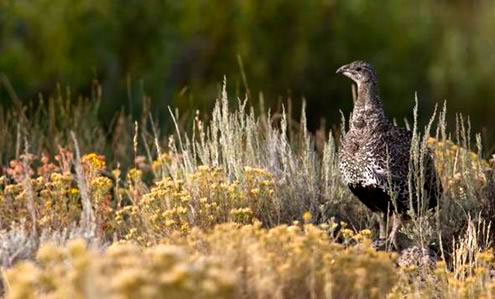The greater sage-grouse is a charismatic bird of the West that has become an iconic symbol for the health of critical western sagebrush habitats that span 173 million acres. Sage-grouse are dependent on the sagebrush ecosystem for every life stage. They occupy large landscapes with some migratory birds moving tens of miles between seasonal ranges. Wyoming is a stronghold for this umbrella species with 25% of the range-wide habitat and 37% of the known range-wide male populations – the most for any state. Wyoming also has more leks (i.e., strutting or breeding grounds) than any other state. From a ranch management standpoint, maintaining functioning sagebrush steppe is good for ranches, sage-grouse conservation, for rural western economies, and for many other sagebrush ecosystem organisms, such as songbirds and small mammals. Approximately 350 vertebrate wildlife species that inhabit sagebrush may also benefit from greater sage-grouse conservation.
Image Source: Wyoming Game & Fish Department

